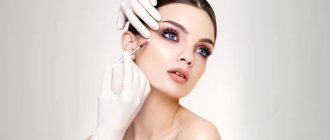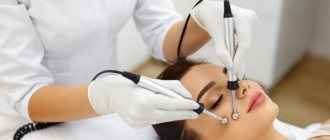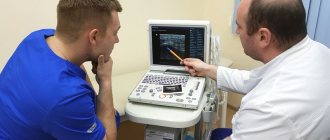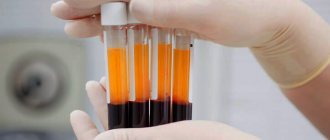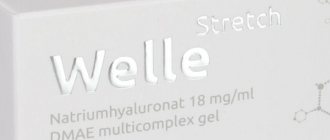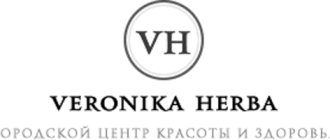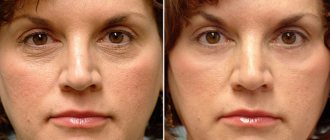Plasmolifting (PRP, Plateletrichplasma) is an injection method of subcutaneous administration of platelet-rich plasma from the patient’s own blood, leading to the activation of regenerative processes in the skin. Human blood plasma contains the substances fibrin and collagen. They are the ones who participate in the construction of new tissue cells in the body. These substances help restore cells of any organ, be it skin that has lost its elasticity or brittle hair. The essence of the method is to isolate plasma from human blood and then inject it into the area requiring restoration.
In addition, plasma has a high concentration of platelets, which contain special growth factors and proteins. They stimulate the production of fibroblasts in stem cells, which enhances the regeneration process.
Mechanism of action of plasma lifting
To use this method of cell regeneration, platelet autoplasma (TAP) is required. It does not contain red blood cells, and the number of platelets in it is close to their number in peripheral blood (150-350 thousand/μl). Such plasma is very rich in amino acids, mineral elements (potassium, magnesium, zinc, iron, calcium, etc., peptides and vitamins B, C, A, D, E, K, necessary for the life of cells. Being a natural component of the human body , autoplasma does not cause allergic reactions. This method is also universal due to its bioavailability, due to which regeneration processes occur naturally.
Physiologically, the process of plasmolifting occurs as follows: when platelets lose contact with the endothelium, leaving the capillaries and vessels, they change their shape and secrete alpha granules, which saturate the damaged area with growth factors.
The same thing happens in the plasmolifting procedure, when autoplasma is injected into the desired area, i.e. platelet adhesion and the release of growth factors from alpha granules occur, as in a normal protective physiological process.
How does the plasma lifting procedure work?
Blood taken from the patient is subjected to a centrifugation procedure to separate red blood cells. Platelet autoplasma should be yellow. After 10-15 minutes, the prepared platelet autoplasma can already be used as an injection into the area required for treatment. Before this, the skin is treated with a special anesthetic cream. A thin needle is taken and the drug is injected using the papular method.
The course of treatment using plasma lifting is prescribed individually, based on the initial condition and degree of cell damage. On average, 3-4-5 procedures are recommended with an interval of about a week - such a course produces a noticeable effect. To maintain improved cell condition, you can repeat the procedure once every year or two.
Stages of plasma therapy
Plasma therapy for the face is carried out in several stages:
- initial consultation with a dermatocosmetologist;
- venous blood sampling;
- placing the tubes in a special centrifuge to separate enriched plasma from the blood;
- skin make-up remover;
- injection of platelet plasma into pre-designated areas;
- bactericidal treatment of the dermis.
The procedure does not exceed 30-40 minutes and does not require general anesthesia. Local anesthesia can be used to relieve sensitivity during manipulation.
Indications for plasma lifting
In cosmetology, the use of plasma lifting is advisable in the following cases:
- loss of skin elasticity, deterioration of its turgor;
- unwanted skin pigmentation;
- noticeable facial wrinkles, the appearance of age-related folds on the skin;
- sagging face, deterioration of facial oval;
- gray, “tired” complexion;
- post-acne and acne;
- scars and stretch marks on the skin;
- hair loss (alopecia) and deterioration of their condition.
Of course, the use of autoplasma in cosmetology is not limited only to the face and scalp; these reasons are only the main ones. The method is used on any part of the human body that has defects. Body plasma lifting is a popular procedure. It is used locally to treat cellulite and obesity and rejuvenate the skin of the body.
Is there a difference between blood plasma mesotherapy and other rejuvenation methods?
There is a difference between blood plasma mesotherapy and other methods of skin rejuvenation, and it is significant. This technique allows you not only to fight skin aging, but to influence the very cause of changes. The procedure allows you to launch the natural mechanism of rejuvenation and regeneration of skin cells. While other injection techniques (contour plastic surgery, Botox and others) only eliminate the consequences of metabolic disorders, but cannot significantly slow down skin aging. Mesotherapy with blood plasma (plasmolifting) does not have this drawback.
Contraindications for plasma lifting
Despite the maximum naturalness of this method and the greatest proximity of autoplasma to the components of the blood of a certain person, the cosmetic procedure of plasma lifting has a certain number of contraindications. Among them are:
- Purulent-infectious skin diseases;
- Diabetes;
- Bleeding disorders and blood diseases;
- Decreased immunity;
- Oncology;
- Hepatitis;
- Diseases of the kidneys and pancreas.
At the same time, plasma lifting has a minimal risk of complications and side effects, because with this method no foreign substances are introduced into the body. This is its main difference from biorevitalization and mesotherapy procedures.
The individual effect of using this method is due to the dependence on the initial state of the cells. Plasmolifting is attractive primarily for its simplicity and naturalness, as well as the minimal risk of side effects. The skin is not injured. What is better biorevitalization. mesotherapy or plasma lifting for each specific patient can only be determined by a cosmetologist.
The effect of plasma lifting
Most patients notice a noticeable positive effect after 1-1.5 weeks. Some note that the effectiveness of plasma lifting occurs after the first injection. The result depends on age, skin condition and characteristics of the body as a whole.
Among those who have tried the plasmolifting method on themselves, the majority leave good reviews about the procedure, which will help shape the attitude towards this method in new patients. Many women note that the result of the procedure is skin rejuvenation, a fresher appearance, gradual smoothing of scars and a reduction in the effects of acne. The skin becomes more elastic and tightened.
Some patients complain of swelling and bruising on the skin after using an autoplasma injection, but in fact this is an obvious consequence of the cosmetic procedure. Side effects from plasma lifting are extremely rare and are usually associated with a violation of the procedure protocol or a violation of the rules of asepsis and antisepsis. Some are confused by the fact that for a noticeable effect, not one, but a certain number of injections are required, and the cost of such a procedure may not be affordable for everyone.
The plasmolifting technique has: A rejuvenating effect.
Helps remove dead cells, promoting the formation of new ones, smoothes the skin, increasing its turgor, the skin becomes tender and soft to the touch. Activates the BCL-2 gene, which delays cell aging.
Protective effect.
Strengthens the protective barrier against the effects of harmful ultraviolet radiation, improves skin regeneration, due to which small wounds and scars heal faster. The skin becomes protected from the effects of all kinds of external factors that have a negative impact on its condition: temperature changes, sunlight, the consequences of taking strong medications. Suppresses the proliferation of pathogenic microflora.
Moisturizing effect.
Prevents skin dehydration. The skin is deeply hydrated and the synthesis of macromolecular proteins, which provide skin elasticity, is improved. Skin cells retain more moisture inside, which eliminates the feeling of tightness, dryness, and reduces the appearance of skin irritation and inflammation.
Reduces skin photosensitivity.
The appearance improves due to increased cell metabolism, which prevents the appearance of age spots after sun exposure, which leads to an even complexion.
Improves skin trophism.
The process of blood circulation in the dermis is enhanced, metabolic processes are accelerated, which leads to cell renewal, the skin takes on a healthy and fresh appearance.
Lifting effect. Skin cells are renewed and saturated with moisture, the oval of the face is tightened. Fights hyperpigmentation. The stratum corneum is exfoliated, skin cells are renewed, and facial tone is evened out.
What is Ulthera SMAS lifting combined with?
Ultherapy is the best method of non-surgical skin lifting today, giving results comparable to classic surgical skin tightening, and works great with many injectable drugs.
For example, with Radisse filler, a preparation based on calcium hydroxyapatite that activates the synthesis of collagen and elastin and increases skin thickness. There is a protocol where filler is first injected, and then a hardware procedure is performed. The result is a double effect: Ulthera strengthens the muscular aponeurotic layer of SMAS, provides tightening, tightens the skin, and Radiesse, in turn, stimulates neocollagenesis. That is, it turns out that one procedure enhances the effect of another. The result is powerful tissue tightening while simultaneously improving skin quality.
This combination of procedures is primarily indicated for patients with loose skin. There is another drug that has a pronounced stimulation of new collagen - this is Sculptra. It contains polylactic acid. This drug can also be used in combination with Ulthera, but must be administered before the procedure.
Altera can also be combined with classic fillers based on hyaluronic acid. After all, we should not forget that age-related changes occur in all layers of the skin, including the SMAS (muscular aponeuratic layer). And it is Ulthera that can strengthen it. Therefore, it is first recommended to undergo Ulteratherapy, and after about a month and a half, hyaluronic fillers are injected into the lower third of the face.

